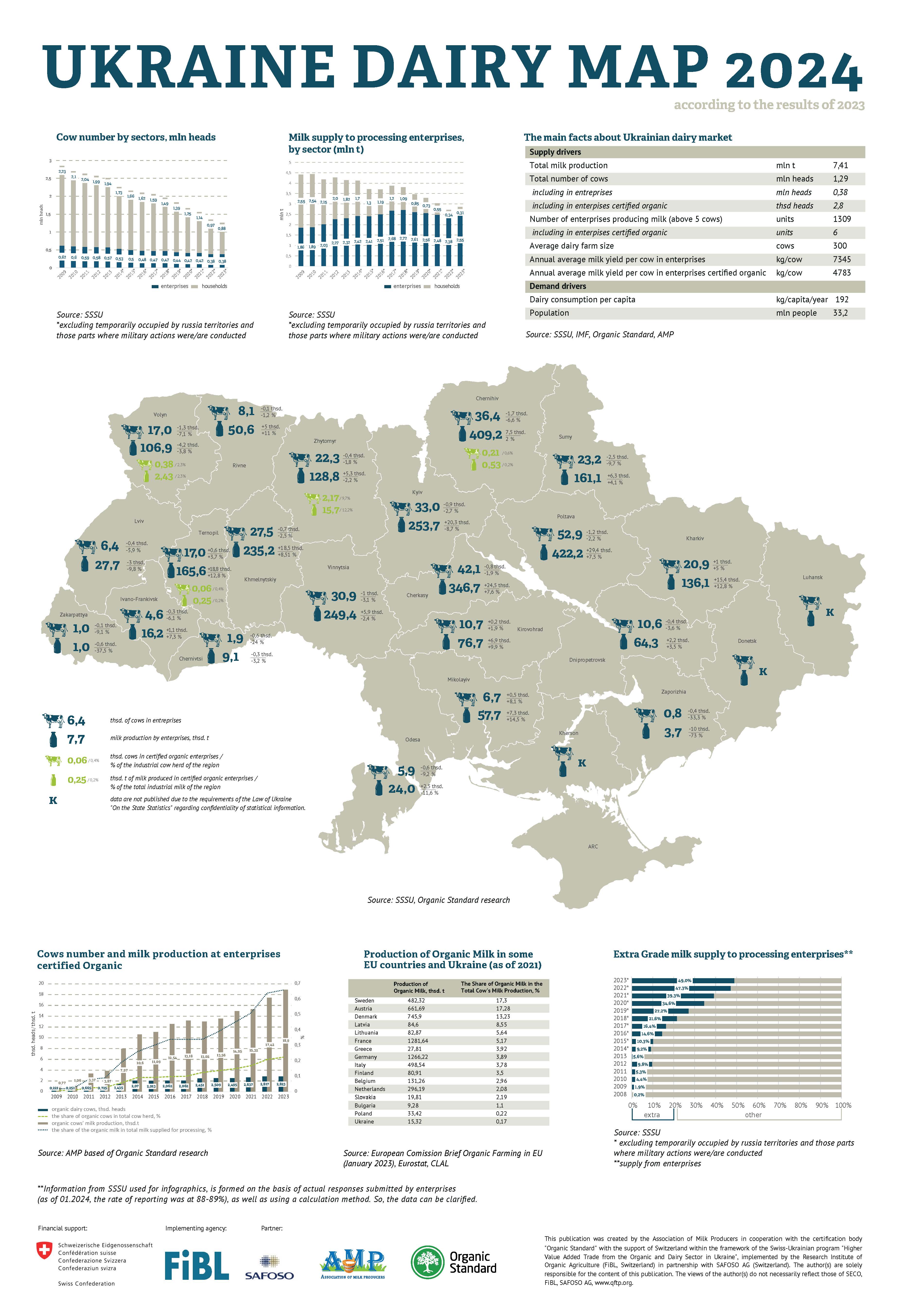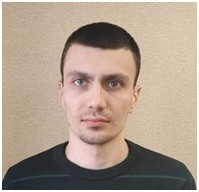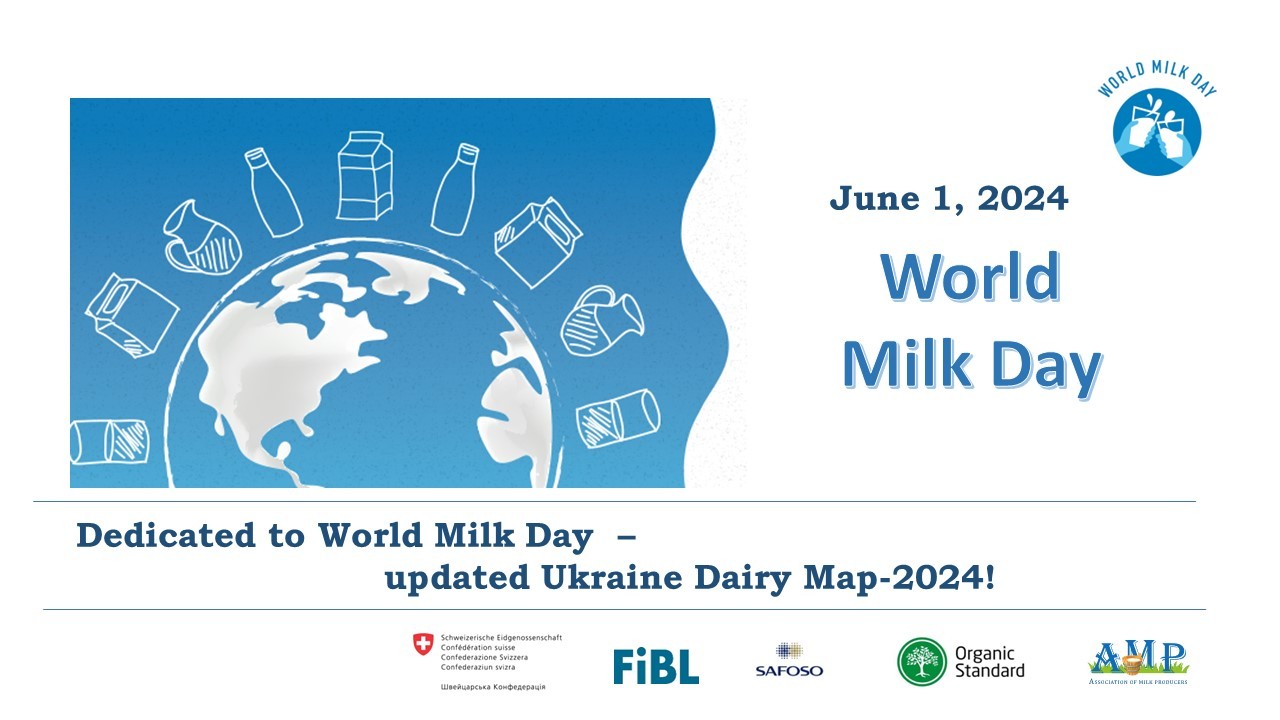On the occasion of a special date for the dairy community of the world - World Milk Day, which was officially introduced by the Food Organization (FAO) of the United Nations on June 1, 2001, the Association of Milk Producers (AMP) in cooperation with the certification body "Organic Standard" and with the support of Switzerland within the framework of the Swiss-Ukrainian Program “Higher Value Added Trade from the Organic and Dairy Sector in Ukraine" (QFTP), implemented by the Research Institute of Organic Agriculture (FiBL, Switzerland) in partnership with SAFOSO AG (Switzerland), prepared and published an updated infographic "Ukraine Dairy Map - 2024".
For the world's dairy community, the first day of summer is symbolic, among other things, because it coincides with International Children's Day. And this additionally proves: milk is a global product, an indispensable element of healthy nutrition and a healthy lifestyle, of happy and healthy childhood, responsible food production and ensuring the social stability of households and communities, and food security of countries.
For Ukraine and its dairy industry, June 1 is also the 829th day in the third year of russia's full-scale brutal war against Ukraine, during which dairy farms and enterprises are targeted for destruction by the invaders. Despite the challenges and devastating consequences of russian aggression, Ukrainian dairy farms continue to develop, invest into productivity and technologies, increase the volume and safety indicators of raw milk and provide Ukrainians and the world with milk and dairy products.
The updated infographic "Dairy Map of Ukraine-2024" includes data on the dynamics and results of the industry in 2023 (as of January 1, 2024) based on preliminary calculations of the State Statistics Service, the Ministry of Agrarian Policy and Food, own monitoring and researches of AMP and Organic Standard. For a number of temporarily occupied territories, as well as those where hostilities are (were) being conducted, information is currently sensitive and is not provided in order to comply with the requirements of the Law of Ukraine "On Official Statistics" regarding the confidentiality of statistical information. And it is also important to consider that a number of frontline (and not only) territories are unable to provide statistical reporting.
According to the results of 2023, almost every region continued to note a reduction in the number of cows in the industrial sector (except for a slight increase in Ternopil and Mykolaiv, as well as Kharkiv, which began a difficult path of recovery after deliberation and loss of over 50% of industrial dairy herd). However, at the same time, thanks to the increase in the productivity of cows, most regions demonstrated an increase in the volume of industrial milk production. As a result: the volume of milk from enterprises in the processing structure returned to the level of 2021, the total share of such milk in the structure of processing increased to 89.1% (compared to 81.8% before the full-scale invasion), and the share of the "extra" grade milk reached 49%. The profile of the top-5 dairy regions changed: as of January 1, 2024, Poltava, Cherkasy, Chernihiv, Kyiv, and Vinnytsia regions became the leaders, keeping 51.4% of Ukraine's industrial cows and providing 72.5% of milk from dairy farms for processing. The industry also suffered losses in the number of farms: on the eve of full-scale invasion 1,781 dairy farms were in operation in Ukraine, according to the results of 2022 their number decreased to 1,440 farms, and according to the results of 2023 – to only 1,309 enterprises.
There are new data in the "Ukraine Dairy Map-2024" - thanks to the research by Organiс Standard, the infographic also includes information on the number of certified organic enterprises producing milk, their location, the dynamics of the cow population, the volume of milk production and the share in the industrial dairy farming of Ukraine. From 2009 to 2024, the number of certified organic farms increased from 2 to 6 ones, but at the same time, thanks to large organic facilities in the Northern region, the number of cows in certified organic farms increased more than 12 times (from 221 to 2,823 head), and the production of organic milk - more than 20 times (from 0.77 to 18.9 thousand tons. It is worth mentioning that the share of organic milk in the total milk volume of Ukraine is almost on par with a number of EU countries, in particular Poland. The total share of organic milk in the EU is still low, despite significant financial support, primarily in the frame of CAP programs, at the level of 3.7%. Although there are leaders with a share of organic milk over 10%, and Germany, France, Denmark, Austria and Italy produce 75% of all EU organic milk.
Under the conditions of a full-scale war, managers and specialists of dairy enterprises of Ukraine, experts of related industries, once again prove that there are no random people in this industry - only those who are truly passionate and devoted to the dairy business, aimed at the production of high-quality and tasty Ukrainian milk, for the healthy and peaceful future of our children. Those who, even under shelling, do not leave their cows, go through blackouts together, demine their fields, feed and save their communities, contribute to the Armed Forces and themselves are in the Armed Forces, study and implement EU requirements, do not give up, often even after losing everything.
Together with the whole world today, on #WorldMilkDay, let's raise our glasses of milk and support the #RaiseAGlass flashmob, and not only to taste and #EnjoyDairy, but first of all to thank everyone involved in the dairy business. And to the Victory of Ukraine!
To view and download the Dairy Map Of Ukraine-2024, follow the link.

This publication was created by the Association of Milk Producers in cooperation with the certification body "Organic Standard" with the support of Switzerland within the framework of the Swiss-Ukrainian Program "Higher Value Added Trade from the Organic and Dairy Sector in Ukraine", implemented by the Research Institute of Organic Agriculture (FiBL, Switzerland) in partnership with SAFOSO AG (Switzerland). The author(s) are solely responsible for the content of this publication. The views of the author(s) do not necessarily reflect those of SECO, FiBL, SAFOSO AG, www.qftp.org.



